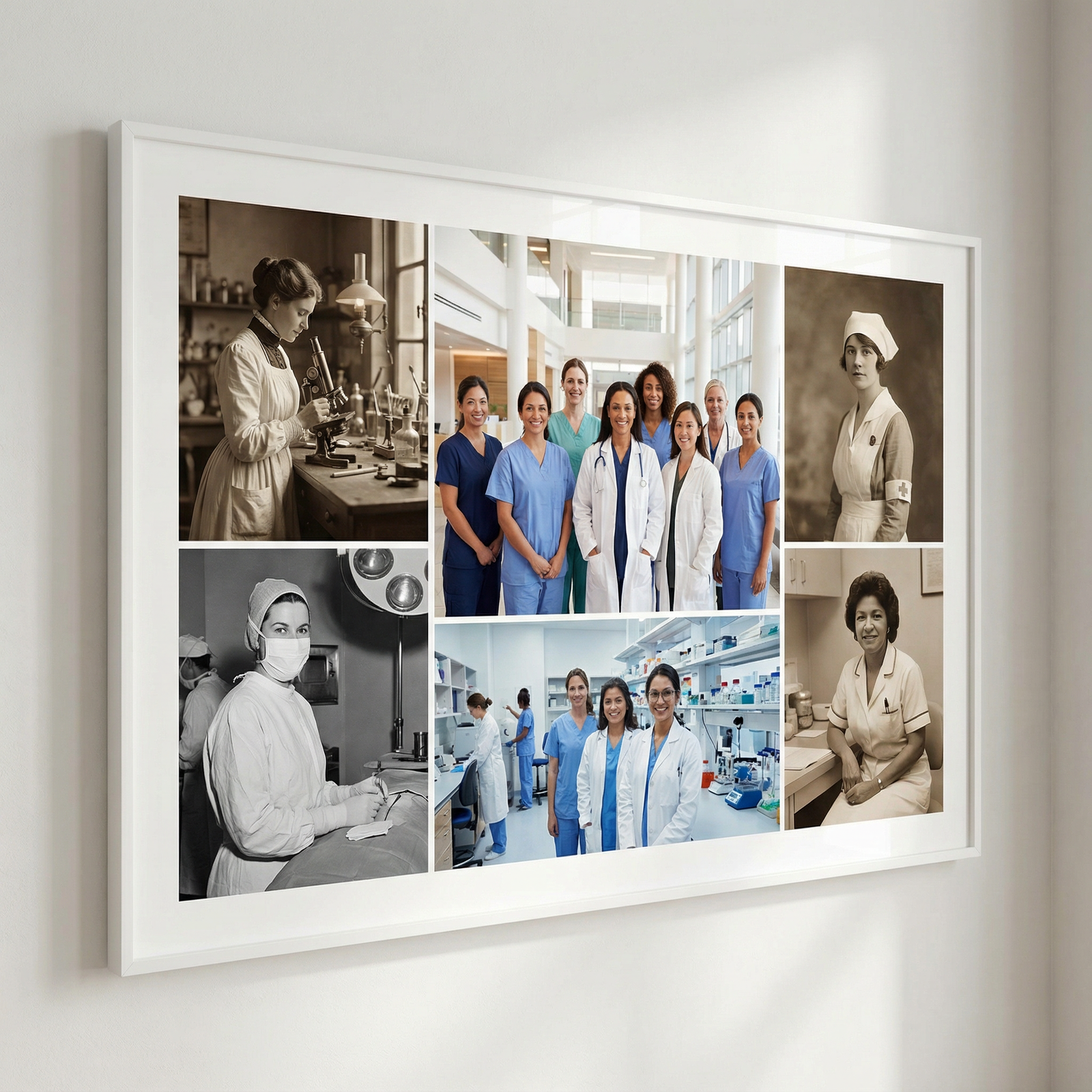Resilient Female Physicians: Inspiring Stories of Medical Challenges

Introduction: Women in Healthcare Battling the Odds
In today’s rapidly changing healthcare landscape, Female Physicians are leading complex teams, driving research, and shaping patient care. Yet, despite their expertise and commitment, Women in Healthcare often navigate additional obstacles: implicit bias, questions about their authority, and the constant pressure to prove themselves in environments that have historically favored men.
Against this backdrop, the most challenging clinical cases take on a deeper meaning. These cases are not only medical puzzles; they are crucibles where resilience in medicine, identity, ethics, and Patient Advocacy intersect. When female doctors reflect on their toughest moments in practice, they reveal far more than diagnostic dilemmas—they highlight how compassion, persistence, and advocacy can transform outcomes for patients and for the profession itself.
This article revisits and expands the stories of several remarkable female physicians, illustrating:
- How they approached some of their most demanding cases
- The gender- and culture-related challenges layered on top of medical complexity
- What these experiences taught them about leadership, resilience, and ethical practice
- How current and future physicians can apply these lessons to their own careers
These stories are not just inspirational; they are practical roadmaps for medical students, residents, and early-career doctors seeking to provide excellent care while building a sustainable, values-driven career in medicine.
Female Physicians on the Front Lines: Stories of Clinical Resilience
Case 1: Dr. Emily Carter – Navigating a Complex, Overlooked Diagnosis
Dr. Emily Carter, a board-certified internist at a large academic medical center, vividly recalls one of her most challenging cases early in her attending years. A young woman in her late 20s presented with diffuse fatigue, joint pain, shortness of breath, and intermittent low-grade fevers. Her symptoms had been ongoing for months, yet prior evaluations at different clinics labeled her complaints as “stress-related” or “anxiety.”
By the time she saw Dr. Carter, the patient felt discouraged and dismissed.
The Clinical Challenge
Initial workup—including basic labs, chest X-ray, and an EKG—showed only mild anemia and nonspecific inflammatory markers. Several colleagues suggested a watchful waiting approach or referral back to primary care, but something bothered Dr. Carter. The pattern of migratory arthralgias, photosensitivity reported on further questioning, and the patient’s demographic profile raised concern for an autoimmune process such as systemic lupus erythematosus (SLE).
Instead of accepting earlier assumptions, Dr. Carter:
- Performed a meticulous, head-to-toe physical exam
- Took a detailed history, including family history, medications, and symptom triggers
- Ordered targeted testing: ANA, anti-dsDNA, complement levels, and a urinalysis to check for renal involvement
The results confirmed her suspicion: the patient met criteria for SLE, with early renal involvement.
Gender, Bias, and Patient Advocacy
The patient later shared that several prior clinicians had implied her symptoms were “probably stress from work” or “maybe depression.” As a woman in her 20s, she felt her pain had not been taken seriously.
Dr. Carter’s approach illustrated key elements of Patient Advocacy:
- Believing the patient’s experience even when prior documentation was ambiguous
- Resisting diagnostic anchoring based on previous, possibly biased assessments
- Exploring less common but serious diagnoses when the story did not fit benign explanations
“This case reminded me how crucial it is to listen deeply and trust both the data and your clinical intuition,” Dr. Carter reflects. “Resilience in medicine isn’t just about pushing through long hours—it’s about pushing past assumptions, even when they come from respected colleagues.”
Lessons for Trainees
- Take a fresh history and exam rather than relying solely on previous records.
- Recognize that women’s symptoms are more likely to be attributed to psychological causes; consciously guard against this bias.
- Document your diagnostic reasoning clearly—especially when pursuing a less obvious diagnosis—so your advocacy is visible in the chart and to the team.
Case 2: Dr. Maria Patel – Overcoming Cultural and Communication Barriers
As a pediatrician in a community clinic, Dr. Maria Patel’s daily work involves more than physiology and pharmacology. Her most challenging cases often stem from cultural gaps and language differences that, if unaddressed, can derail even the best evidence-based plan.
One memorable case involved a 10-year-old boy with recurrent emergency department visits for asthma exacerbations. Despite standard inhaler prescriptions and multiple discharge instructions, his symptoms remained poorly controlled.
The Hidden Barrier
On closer review, Dr. Patel realized that:
- The family’s primary language was not English
- They had limited health literacy
- They held traditional beliefs about illness and medication use
When asked how they were using the inhaler, the parents demonstrated incorrect technique and admitted they stopped “strong medicine” whenever the child felt a little better.
Recognizing the depth of the barrier, Dr. Patel arranged:
- A professional medical interpreter for every visit
- A dedicated teaching session using visual aids and spacer demonstrations
- A conversation exploring the family’s beliefs about chronic disease and medications
Compassion, Culture, and Community
This was not simply a communication issue—it was about building trust and aligning treatment with the family’s values. Dr. Patel reframed asthma control in terms that resonated with them: preventing missed school days, improving the child’s ability to play, and reducing frightening late-night ER visits.
She also:
- Coordinated with a community health worker who spoke the family’s language
- Connected them to a culturally specific support group for families managing chronic conditions
- Provided a written asthma action plan in their native language
“Once we treated the family as partners rather than ‘noncompliant caregivers,’ everything changed,” Dr. Patel shares. “Effective medicine means seeing the whole context of a child’s life.”
For Women in Healthcare, especially those from minority backgrounds, these moments can be emotionally charged. Dr. Patel often found herself advocating—not only for the child, but also for the family’s dignity and autonomy when discussing the case with colleagues who were frustrated by repeat ED visits.
Actionable Strategies for Trainees
- Always ask: “What does this illness mean to you?” and “What worries you most?”
- Use professional interpreters rather than relying on family members, especially children.
- Provide teach-back opportunities: ask patients or parents to demonstrate inhaler use or explain the plan in their own words.
- Partner with community health workers and social services to support adherence beyond the clinic.

Case 3: Dr. Susan Wong – Leading Through a Critical Emergency
In emergency medicine, high-adrenaline scenarios are routine, but some nights leave a lasting imprint. During one overnight shift, Dr. Susan Wong, an emergency physician at a busy trauma center, faced a multi-vehicle collision that sent more than a dozen patients to her department within minutes.
Controlled Chaos and Split-Second Decisions
As the most senior physician on site, Dr. Wong had to:
- Activate the hospital’s mass casualty protocol
- Organize multiple trauma bays and coordinate with surgical, anesthesia, and ICU teams
- Triage based on severity and survivability using limited, rapidly evolving data
One of the most critical patients was a teenager with signs of internal bleeding and hemodynamic instability. Dr. Wong:
- Prioritized rapid bedside ultrasound to confirm suspicion of intra-abdominal hemorrhage
- Ordered immediate blood products and initiated a massive transfusion protocol
- Coordinated a direct transfer to the operating room while stabilizing airway and circulation
The teenager survived, thanks in large part to rapid triage, clear communication, and trust within the interprofessional team.
Gender Dynamics in High-Stakes Settings
In emergency and trauma environments, Female Physicians may be mistaken for nurses or junior staff, especially in chaotic scenes where roles are not immediately clear. Dr. Wong has experienced moments where orders were questioned until a male colleague verbally reinforced them.
Over time, she learned to:
- Clearly introduce herself and her role at the start of major events (“I’m Dr. Wong, attending emergency physician. I’ll be leading trauma management.”)
- Use closed-loop communication and direct task assignment (“Dr. Lee, please manage airway. Nurse Johnson, start two large-bore IVs and draw labs.”)
- Debrief after events to reinforce processes and address any communication lapses or implicit bias
“Resilience in medicine doesn’t mean shouldering everything alone,” she explains. “It means cultivating a team culture where clear leadership is respected—no matter who it comes from.”
Takeaways for Aspiring Emergency Physicians
- Practice structured communication: SBAR, closed-loop communication, and clear role assignment save lives.
- Learn and rehearse your hospital’s disaster and mass casualty protocols in simulation settings.
- Debrief every major trauma or resuscitation, focusing not only on clinical outcomes but also team communication and system gaps.
Case 4: Dr. Linda Reyes – Addressing Patient Resistance with Empathy
Family physician Dr. Linda Reyes often says that the hardest part of her work is not knowing what to do medically, but helping patients implement what they already know. One of her most difficult long-term cases involved a middle-aged man newly diagnosed with type 2 diabetes who was firmly resistant to lifestyle modification or medication.
When Information Isn’t Enough
Despite multiple visits where Dr. Reyes:
- Explained the risks of uncontrolled diabetes
- Reviewed diet and exercise recommendations
- Adjusted medications and offered referrals to nutrition services
…her patient’s A1C remained dangerously high. He missed appointments, often dismissed her suggestions, and frequently said, “I feel fine, so what’s the problem?”
Dr. Reyes recognized a familiar pattern: information without motivation rarely leads to change.
Shifting the Approach: Motivational Interviewing and Peer Support
Dr. Reyes decided to focus less on lecturing and more on understanding the patient’s perspective. Using motivational interviewing techniques, she explored:
- His fears about medication side effects
- His belief that diabetes only becomes “real” when symptoms start
- His feelings of shame and denial after watching relatives suffer complications
She then:
- Connected him to a community-based diabetes support group led by peers
- Helped him set specific, achievable goals (e.g., swapping one sugary drink per day for water)
- Celebrated small wins at each visit, emphasizing progress rather than perfection
“The breakthrough came when he heard stories from other men who looked like him, ate like him, and had faced the same denial,” Dr. Reyes shares. “Peer narratives often carry more weight than any physician handout.”
Over time, the patient’s A1C improved significantly, and he began to take pride in his health choices.
Practical Tips for Managing Resistant Patients
- Use open-ended questions (“What worries you most about this diagnosis?”) rather than yes/no checklists.
- Normalize ambivalence: “It’s common to feel conflicted about making big changes.”
- Offer options: group classes, peer mentors, community programs, mobile health apps.
- Document psychosocial barriers and revisit them; change is often gradual, not instantaneous.
Case 5: Dr. Sarah Alvi – Long-Term Advocacy in Mental Health
Psychiatrist Dr. Sarah Alvi works with patients whose illnesses are often invisible to the outside world but profoundly disabling. One of her most challenging—and ultimately rewarding—cases involved a young woman with severe anxiety, depression, and complex trauma from childhood abuse.
The Slow Work of Building Trust
Initially, the patient:
- Missed or canceled multiple appointments
- Spoke very little during sessions
- Expressed deep mistrust of “the system” and prior mental health providers
Dr. Alvi recognized that rushing treatment could retraumatize her patient. Instead, she:
- Prioritized safety and stabilization over rapid trauma processing
- Explicitly invited the patient to set the pace of disclosure
- Validated her experiences with previous providers and acknowledged systemic failures
Over many months, with a combination of psychotherapy, careful pharmacologic management, and consistent presence, the patient began to share more details. This allowed Dr. Alvi to refine the diagnosis and tailor treatment, eventually leading to significant improvement in functioning and quality of life.
“In mental health, resilience in medicine is about staying present even when progress is slow or nonlinear,” Dr. Alvi reflects. “We advocate not only for our patients but also for investment in systems that support long-term care.”
System-Level Advocacy
Dr. Alvi’s work extended beyond the consulting room. She:
- Collaborated with social workers to secure safe housing for the patient
- Wrote detailed, supportive documentation for workplace accommodations
- Participated in hospital committees to improve trauma-informed care training for staff
Her case highlights how Patient Advocacy in psychiatry often involves navigating legal, occupational, and social service systems, not just prescribing and therapy.
Case 6: Dr. Rebecca Ellis – Continuity of Care and Social Determinants of Health
Family physician Dr. Rebecca Ellis encountered one of her most formative cases in a safety-net clinic. Her patient, a man in his 50s experiencing homelessness, struggled with uncontrolled diabetes, hypertension, and chronic wounds. He frequently missed appointments and could not store insulin reliably due to lack of refrigeration.
Beyond the Prescription Pad
Dr. Ellis quickly realized that traditional outpatient strategies were inadequate. The barriers were not knowledge or willingness, but structural challenges:
- Unstable housing
- Limited access to healthy food
- Inconsistent transportation
- Fragmented care across clinics and emergency departments
Recognizing that continuity of care was essential, she initiated a coordinated, multidisciplinary plan:
- Engaged a case manager to help with housing applications and transportation vouchers
- Switched to non-refrigerated medication options when possible
- Arranged standing lab orders and flexible appointment times to accommodate shelter schedules
- Partnered with a local outreach program that could check in on him between visits
Over several months, his blood pressure and glucose levels improved, his wound care became consistent, and his hospitalizations declined.
“Healthcare doesn’t exist in a vacuum,” Dr. Ellis emphasizes. “For many patients, prescribing without addressing social determinants is like writing a prescription on water—it simply doesn’t hold.”
Lessons in Structural Competency
For medical trainees, this case underscores the importance of:
- Screening for social determinants of health (housing, food security, income, social support).
- Learning about community resources and how to connect patients to them.
- Recognizing that effective continuity of care may require flexible scheduling, telehealth, or outreach models.
How Challenging Cases Shape the Identity of Women in Healthcare
These narratives share common threads that extend beyond the individual stories:
1. Resilience in Medicine Is More Than Endurance
For Female Physicians, resilience is not simply “toughing it out.” It involves:
- Adapting to complex clinical, social, and systemic challenges
- Setting healthy boundaries to prevent burnout
- Seeking mentorship, peer support, and therapy when needed
- Advocating for safer workloads, fair parental leave policies, and equitable promotion practices
2. Patient Advocacy Is Central, Not Optional
Across all six cases, Patient Advocacy emerges as a defining feature of effective care:
- Challenging premature conclusions to uncover serious diagnoses
- Confronting cultural and language barriers compassionately
- Coordinating interprofessional and community resources
- Standing up for patients facing stigma or marginalization
For Women in Healthcare, advocacy often aligns deeply with personal values—and can be a powerful source of professional meaning.
3. Gender and Bias Are Part of the Clinical Reality
Though not always explicitly discussed in charts, the experiences of these female doctors include:
- Being second-guessed in critical moments
- Having their expertise questioned or misattributed
- Balancing caregiving responsibilities at home with demanding call schedules
Acknowledging these realities does not diminish their accomplishments; it contextualizes their resilience and underscores the importance of systemic change.

Frequently Asked Questions (FAQ)
1. What unique challenges do female doctors face in their medical careers?
Female Physicians frequently encounter:
- Implicit and explicit gender bias: being mistaken for non-physician staff, having their decisions questioned, or facing skepticism in leadership roles.
- Work-life integration pressures: managing pregnancy, parental leave, childcare, or eldercare alongside call schedules and examination timelines.
- Underrepresentation in leadership and certain specialties: especially in surgery, cardiology, orthopedics, and executive roles.
- Pay and promotion gaps: data consistently show wage disparities and slower advancement compared with male counterparts, even after adjusting for specialty and hours.
Recognizing these challenges is the first step toward advocating for equitable policies, supportive mentorship programs, and inclusive institutional cultures.
2. How do female physicians make a distinct impact in medicine?
Women in Healthcare contribute invaluable strengths to the profession, including:
- Holistic, patient-centered care that often emphasizes communication, shared decision-making, and social determinants of health.
- Patient Advocacy for marginalized populations, including women, children, minorities, and those facing socioeconomic hardship.
- Collaborative team leadership, fostering strong interprofessional relationships and psychological safety within teams.
- Research and innovation focused on gender-specific medicine, health equity, and community-based interventions.
Studies have shown that practices with diverse teams, including more women, often achieve equal or better patient outcomes and higher patient satisfaction.
3. How can medical students and residents build resilience in medicine?
Actionable strategies include:
- Cultivate mentorship and peer support: Seek mentors of all genders who understand your goals and challenges. Join women-in-medicine interest groups or national organizations.
- Develop reflective practices: Journaling, Balint groups, or debrief sessions after difficult cases can help process emotions and prevent moral distress.
- Set boundaries early: Learn to say no when necessary, protect personal time when possible, and recognize early signs of burnout.
- Invest in skills beyond clinical knowledge: communication, negotiation, leadership, and emotional intelligence are key for long-term resilience.
- Seek professional help when needed: Therapy and coaching are legitimate, evidence-based tools for sustaining a career in a demanding field.
4. What role does mentorship and networking play for women in healthcare?
Mentorship and networking are critical for:
- Career guidance: Navigating fellowship choices, promotions, and transitions between academic, community, and administrative roles.
- Sponsorship: Senior physicians who actively recommend you for committees, speaking engagements, or leadership positions.
- Emotional support: Shared experiences with other women can normalize challenges such as imposter syndrome, discrimination, or work-life conflict.
- Skill-building and collaboration: Networking often opens doors to research projects, quality improvement initiatives, and interdisciplinary collaborations.
Engaging in local hospital groups, national specialty societies, and online professional communities can significantly expand your support system and opportunities.
5. How can healthcare institutions better support female physicians and their patients?
Institutions can foster equity and excellence by:
- Implementing transparent, standardized compensation and promotion criteria
- Offering flexible scheduling, robust parental leave, and on-site or subsidized childcare options
- Providing training on implicit bias, inclusive communication, and trauma-informed care
- Ensuring zero-tolerance policies for harassment and discrimination, with clear reporting mechanisms
- Supporting leadership development programs targeted at Women in Healthcare
- Investing in community partnerships to address social determinants of health impacting their patients
These changes not only benefit Female Physicians; they improve safety, satisfaction, and outcomes for all patients.
Related resources for further growth and advocacy in women’s health and careers:
- How to Build a Supportive Network as a Female Physician
- Strategies for Female Physicians in Male-Dominated Fields
- Empowering Women in Medicine: Key Initiatives
- Overcoming Imposter Syndrome in Medical Training
- Advocacy for Women’s Health in Medicine
These stories of challenge and triumph affirm that when Female Physicians combine clinical excellence with advocacy, empathy, and resilience, they not only change individual lives—they help reshape the culture and ethics of modern medicine itself.

SmartPick - Residency Selection Made Smarter
Take the guesswork out of residency applications with data-driven precision.
Finding the right residency programs is challenging, but SmartPick makes it effortless. Our AI-driven algorithm analyzes your profile, scores, and preferences to curate the best programs for you. No more wasted applications—get a personalized, optimized list that maximizes your chances of matching. Make every choice count with SmartPick!
* 100% free to try. No credit card or account creation required.













